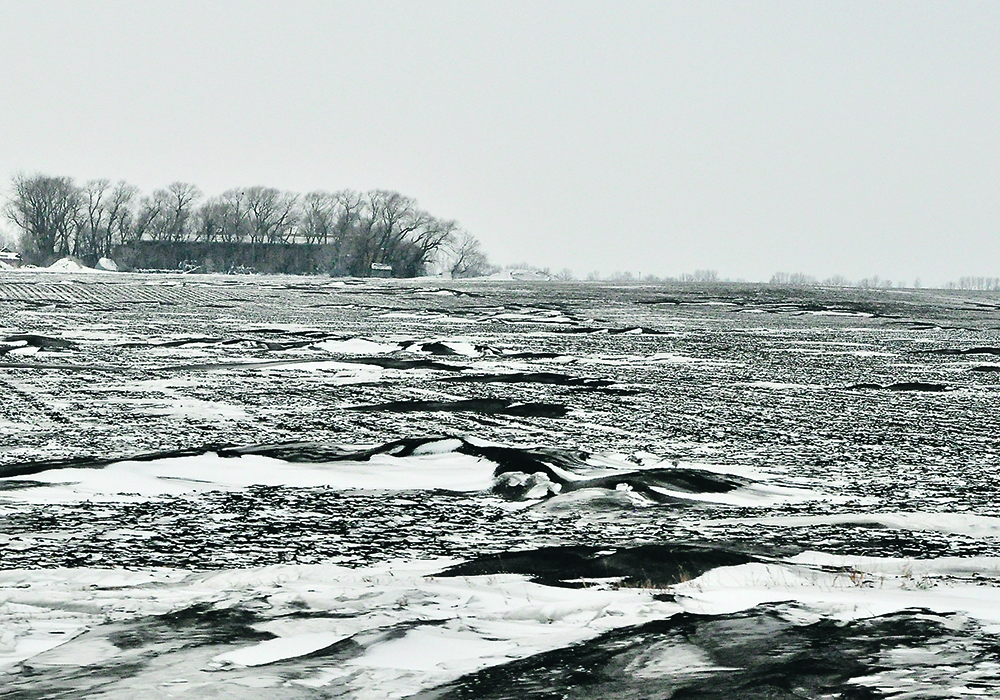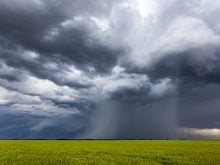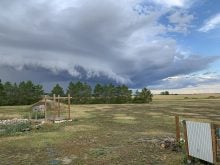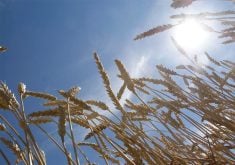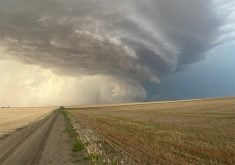I recently received a timely question about the polar vortex —what is it, how does it form and why can it sometimes bring us such cold weather?
Maybe it is a little late for this topic now that temperatures across the Prairies have rebounded from record to near record cold to the other extreme of record to near record warmth, but I still think a discussion is relevant.
The only real cold air outbreak we have seen this winter was thanks to the polar vortex.
Read Also

Farmers urged to be grain-safe this fall
Working around grain bins comes with risk, from farmers falling to drowning in grain: Experts have five tips to help avoid grain-related accidents this harvest.
It is a large area of circulation (low pressure) in the upper atmosphere that is centred near both poles and tends to be strongest in the winter.
As the upper air cools, it contracts and its height above the Earth’s surface gets lower. This is what creates the area of low pressure in the upper atmosphere. It forms because the poles in the winter are not receiving any solar energy.
The counter-clockwise flow around this region in the Northern Hemisphere means the atmosphere is flowing from west to east. The stronger the air flowing around the vortex, the more circular the vortex tends to be. If the flow weakens, the shape of the vortex tends to become distorted and we start to see large ridges and troughs form.
Ridges are regions where the vortex has pulled northward, allowing warm air to move northward, while troughs are areas where it sags southward, allowing cold arctic air to push south.
Are the cold temperatures we normally see in the winter always the result of the polar vortex? The answer is yes and no.
The polar vortex forms as a function of the cold temperatures that develops over our poles in the winter, and this is due too little to no solar input during this time of the year.
Depending on the strength of the winds flowing around it, the polar vortex can create troughs and ridges that can allow cold air to surge southward. It is not the only feature that can influence troughs and ridges, so we can’t always say that every cold snap is directly connected to the polar vortex, but for this year’s cold snap, it was.
It is a little bit like the weather version of what came first, the chicken or the egg?
This winter we are dealing with El Niño conditions across the equatorial Pacific, and this large-scale weather pattern can influence our weather.
This leads us to the topic of teleconnections, which tries to describe how weather patterns upwind of an area tend to influence the weather over that area.
Our upwind area is the Pacific Ocean, so that is why we are always so interested in what is going on over that ocean. El Niño and its counterpart, Le Niña, create a pattern of low and high pressure that can propagate eastward across North America.
This pattern of low and high pressure over the Pacific has resulted in a large and persistent area of low pressure off the west coast of North America, which in turn helps develop an area of upper level high pressure to the east, or over the western Prairies.
This upper ridge is what has been providing us with a predominantly warm and dry winter.
We end up with a short but fairly brutal cold snap because the polar vortex wobbles around during the winter as the flow around the vortex strengthens and weakens.
Daniel Bezte is a teacher by profession with a BA in geography, specializing in climatology, from the University of Winnipeg. He operates a computerized weather station near Birds Hill Park, Man. Contact him at dmgbezte@gmail.com.


